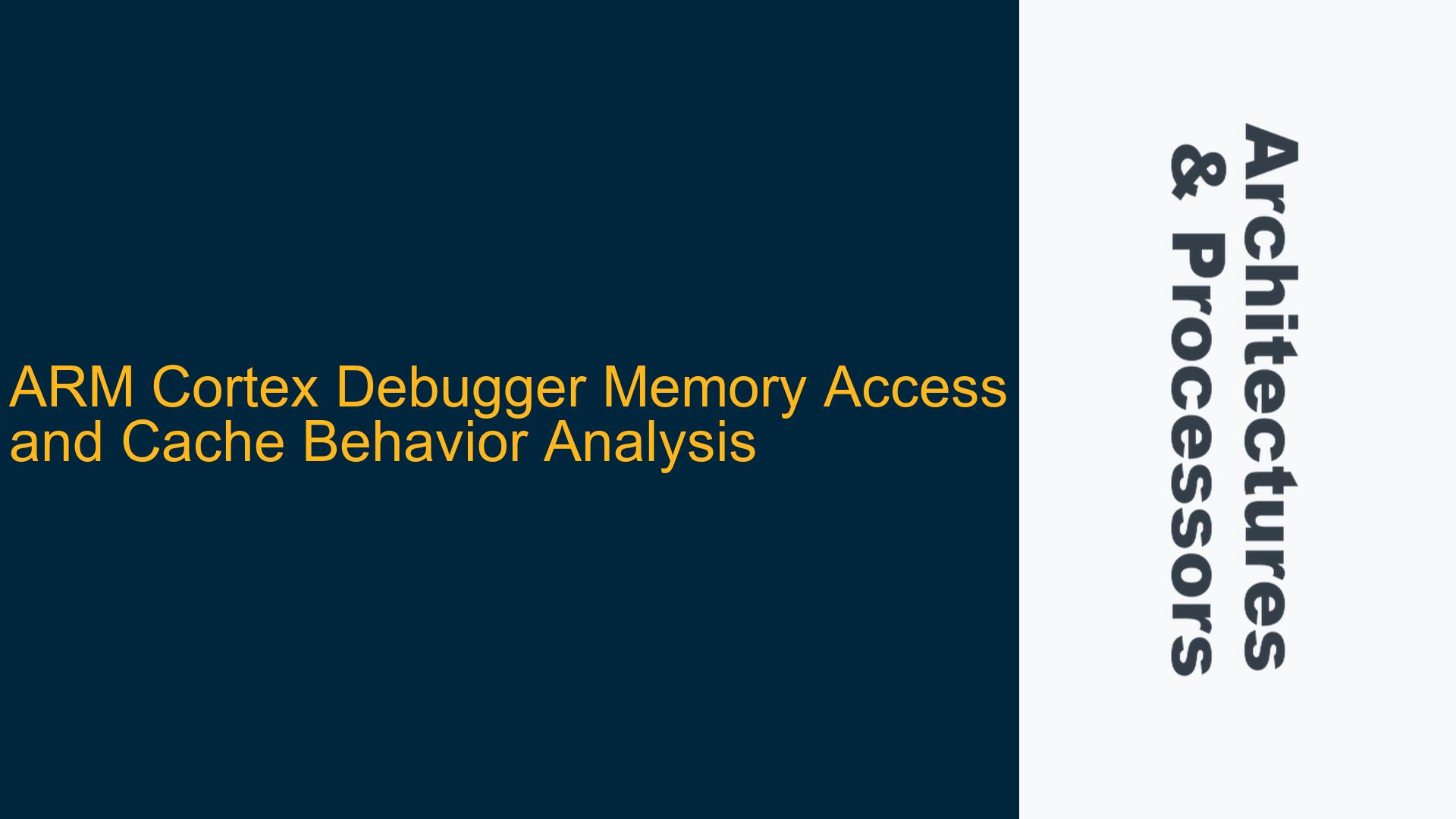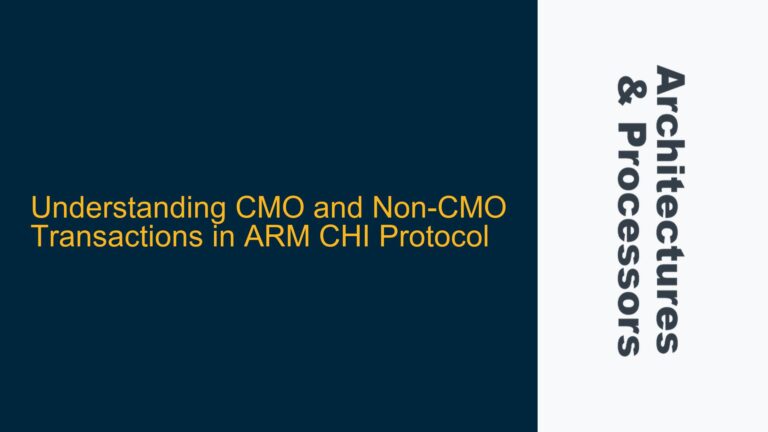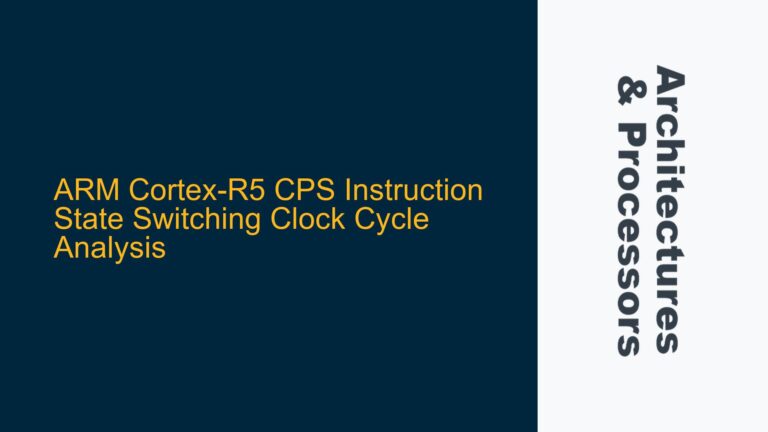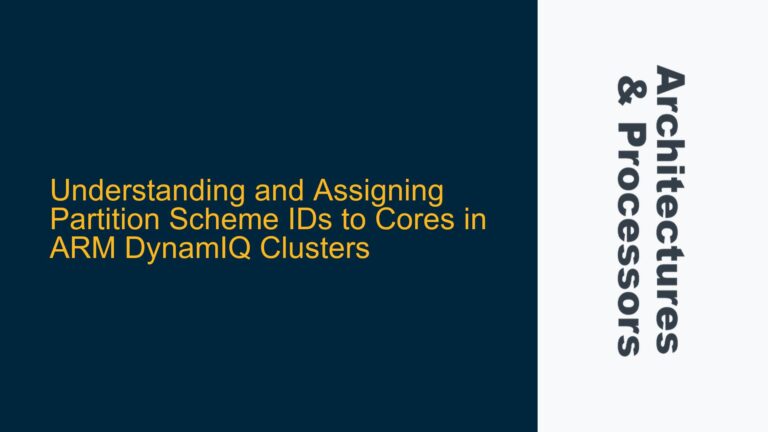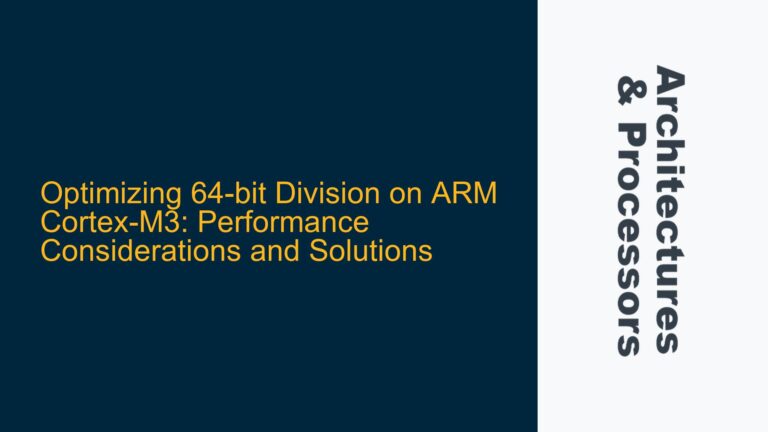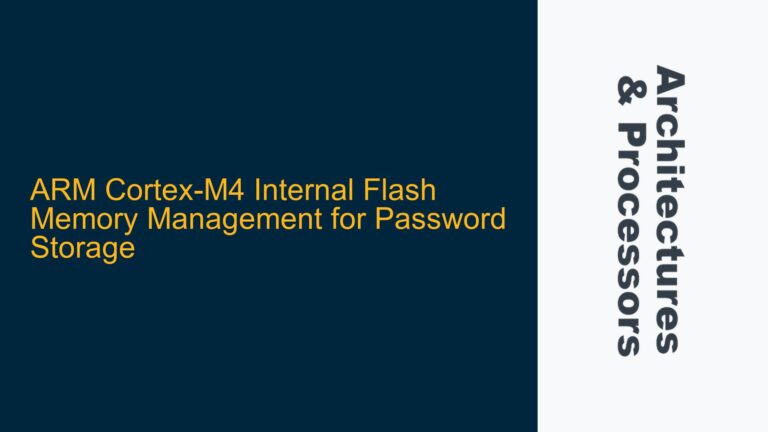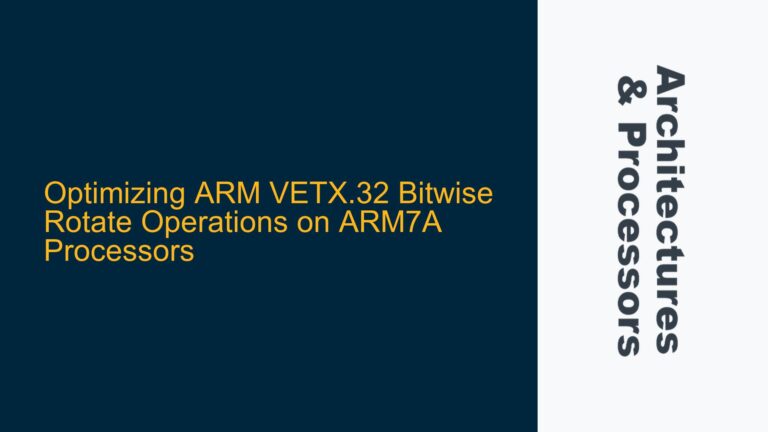Debugger Memory Access via DCC and Cache Involvement
When a debugger accesses memory using the Debug Communications Channel (DCC) on ARM Cortex processors, the memory access typically involves the cache subsystem. The DCC is a communication mechanism that allows the debugger to read from and write to memory while the processor is running or halted. The cache subsystem, which includes both the instruction cache (I-Cache) and data cache (D-Cache), plays a critical role in determining how these memory accesses are handled.
The ARM architecture documentation specifies that debugger memory accesses via DCC are cache-coherent, meaning that the debugger’s view of memory is consistent with the processor’s view. However, the specific cache involved in these accesses depends on the type of operation (read or write) and the configuration of the Memory Management Unit (MMU) and cache settings.
For example, when the debugger writes to memory, the write operation typically updates the D-Cache if the memory region is cacheable. Similarly, when the debugger reads from memory, the read operation may involve both the I-Cache and D-Cache, depending on whether the memory region is marked as cacheable and whether the MMU is enabled or disabled.
The involvement of the cache subsystem in debugger memory accesses can lead to subtle issues, particularly when the MMU is disabled or when cache coherency mechanisms are not properly managed. Understanding the behavior of the cache during debugger memory access is essential for debugging and optimizing embedded systems.
Cache Behavior During Debugger Writes, Reads, and MMU Disabling
The behavior of the cache during debugger memory access depends on several factors, including the type of operation (read or write), the cacheability of the memory region, and the state of the MMU. Below, we analyze the cache behavior in each of these scenarios.
Debugger Writes and D-Cache Involvement
When the debugger writes to memory via DCC, the write operation typically involves the D-Cache if the memory region is cacheable. The D-Cache is responsible for storing data that the processor frequently accesses, and it ensures that the data is quickly available for subsequent read operations. If the memory region is marked as cacheable, the debugger’s write operation updates the D-Cache, and the updated data is eventually written back to main memory based on the cache write policy (write-through or write-back).
In a write-through cache policy, the data is written to both the D-Cache and main memory simultaneously. This ensures that the main memory is always up-to-date, but it can result in higher memory bandwidth usage. In a write-back cache policy, the data is initially written only to the D-Cache, and it is written back to main memory only when the cache line is evicted or explicitly flushed. This can reduce memory bandwidth usage but requires careful management to ensure cache coherency.
Debugger Reads and Cache Lookup
When the debugger reads from memory via DCC, the read operation may involve both the I-Cache and D-Cache, depending on the cacheability of the memory region. If the memory region is marked as cacheable, the debugger’s read operation first checks the D-Cache for the requested data. If the data is found in the D-Cache (a cache hit), it is returned to the debugger. If the data is not found in the D-Cache (a cache miss), the read operation proceeds to main memory.
In some cases, the read operation may also involve the I-Cache, particularly if the memory region contains executable code. The I-Cache stores instructions that the processor frequently executes, and it ensures that the instructions are quickly available for execution. If the memory region is marked as cacheable and contains executable code, the debugger’s read operation may check the I-Cache for the requested data.
MMU Disabling and Cache Involvement
The MMU plays a critical role in determining the cacheability of memory regions. When the MMU is enabled, it translates virtual addresses to physical addresses and determines the cacheability of each memory region based on the memory attributes specified in the page tables. When the MMU is disabled, the memory attributes are typically determined by the default memory type or the memory region’s attributes in the memory map.
If the MMU is disabled, the cache behavior during debugger memory access depends on the default memory type or the memory region’s attributes. For example, if the memory region is marked as non-cacheable, the debugger’s memory access bypasses the cache and directly accesses main memory. If the memory region is marked as cacheable, the debugger’s memory access involves the cache subsystem as described above.
Disabling the MMU can simplify the memory access process, but it can also lead to unexpected cache behavior if the memory attributes are not properly configured. For example, if the memory region is marked as cacheable but the MMU is disabled, the debugger’s memory access may still involve the cache subsystem, leading to potential cache coherency issues.
Implementing Cache Coherency and Debugging Techniques
To ensure proper cache behavior during debugger memory access, it is essential to implement cache coherency mechanisms and use appropriate debugging techniques. Below, we discuss the steps and solutions for managing cache coherency and debugging cache-related issues.
Data Synchronization Barriers and Cache Management
Data synchronization barriers (DSBs) and cache management instructions are essential for ensuring cache coherency during debugger memory access. A DSB ensures that all memory accesses before the barrier are completed before any memory accesses after the barrier are executed. This is particularly important when the debugger writes to memory, as it ensures that the updated data is visible to the processor and other system components.
Cache management instructions, such as cache clean and invalidate operations, are used to ensure that the cache contents are consistent with main memory. A cache clean operation writes the contents of a cache line back to main memory, while a cache invalidate operation marks a cache line as invalid, ensuring that subsequent read operations fetch the data from main memory.
When the debugger writes to memory, it is important to perform a cache clean operation to ensure that the updated data is written back to main memory. Similarly, when the debugger reads from memory, it may be necessary to perform a cache invalidate operation to ensure that the data is fetched from main memory rather than the cache.
Debugging Cache-Related Issues
Debugging cache-related issues during debugger memory access requires a thorough understanding of the cache behavior and the use of appropriate debugging tools. Below, we discuss some common techniques for debugging cache-related issues.
Cache Configuration and Memory Attributes
The first step in debugging cache-related issues is to verify the cache configuration and memory attributes. This includes checking the cacheability of the memory region, the cache write policy (write-through or write-back), and the state of the MMU. If the memory region is marked as non-cacheable, the debugger’s memory access should bypass the cache and directly access main memory. If the memory region is marked as cacheable, the debugger’s memory access should involve the cache subsystem.
Cache Coherency Mechanisms
The next step is to ensure that cache coherency mechanisms are properly implemented. This includes using data synchronization barriers (DSBs) and cache management instructions to ensure that the cache contents are consistent with main memory. If the debugger writes to memory, it is important to perform a cache clean operation to ensure that the updated data is written back to main memory. If the debugger reads from memory, it may be necessary to perform a cache invalidate operation to ensure that the data is fetched from main memory rather than the cache.
Debugging Tools and Techniques
Finally, it is important to use appropriate debugging tools and techniques to diagnose and resolve cache-related issues. This includes using a debugger with cache visualization capabilities, such as ARM DS-5 or Lauterbach TRACE32, to monitor the cache behavior during debugger memory access. It also includes using performance counters to measure cache hits and misses and identify potential performance bottlenecks.
Conclusion
Understanding the behavior of the cache during debugger memory access is essential for debugging and optimizing embedded systems. By implementing cache coherency mechanisms and using appropriate debugging techniques, developers can ensure that the cache behavior is consistent with the system requirements and avoid potential issues. The key is to carefully manage the cache configuration, memory attributes, and cache coherency mechanisms, and to use appropriate debugging tools to diagnose and resolve cache-related issues.
